Target Information
| Target General Information | Top | |||||
|---|---|---|---|---|---|---|
| Target ID |
T38996
(Former ID: TTDR00374)
|
|||||
| Target Name |
Phospholipase D1 (PLD1)
|
|||||
| Synonyms |
Phosphatidylcholine-hydrolyzing phospholipase D1; PLD 1; HPLD1; Choline phosphatase 1
Click to Show/Hide
|
|||||
| Gene Name |
PLD1
|
|||||
| Target Type |
Patented-recorded target
|
[1] | ||||
| Function |
May be involved in the regulation of perinuclear intravesicular membrane traffic. Implicated as a critical step in numerous cellular pathways, including signal transduction, membrane trafficking, and the regulation of mitosis.
Click to Show/Hide
|
|||||
| BioChemical Class |
Phosphoric diester hydrolase
|
|||||
| UniProt ID | ||||||
| EC Number |
EC 3.1.4.4
|
|||||
| Sequence |
MSLKNEPRVNTSALQKIAADMSNIIENLDTRELHFEGEEVDYDVSPSDPKIQEVYIPFSA
IYNTQGFKEPNIQTYLSGCPIKAQVLEVERFTSTTRVPSINLYTIELTHGEFKWQVKRKF KHFQEFHRELLKYKAFIRIPIPTRRHTFRRQNVREEPREMPSLPRSSENMIREEQFLGRR KQLEDYLTKILKMPMYRNYHATTEFLDISQLSFIHDLGPKGIEGMIMKRSGGHRIPGLNC CGQGRACYRWSKRWLIVKDSFLLYMKPDSGAIAFVLLVDKEFKIKVGKKETETKYGIRID NLSRTLILKCNSYRHARWWGGAIEEFIQKHGTNFLKDHRFGSYAAIQENALAKWYVNAKG YFEDVANAMEEANEEIFITDWWLSPEIFLKRPVVEGNRWRLDCILKRKAQQGVRIFIMLY KEVELALGINSEYTKRTLMRLHPNIKVMRHPDHVSSTVYLWAHHEKLVIIDQSVAFVGGI DLAYGRWDDNEHRLTDVGSVKRVTSGPSLGSLPPAAMESMESLRLKDKNEPVQNLPIQKS IDDVDSKLKGIGKPRKFSKFSLYKQLHRHHLHDADSISSIDSTSSYFNHYRSHHNLIHGL KPHFKLFHPSSESEQGLTRPHADTGSIRSLQTGVGELHGETRFWHGKDYCNFVFKDWVQL DKPFADFIDRYSTPRMPWHDIASAVHGKAARDVARHFIQRWNFTKIMKSKYRSLSYPFLL PKSQTTAHELRYQVPGSVHANVQLLRSAADWSAGIKYHEESIHAAYVHVIENSRHYIYIE NQFFISCADDKVVFNKIGDAIAQRILKAHRENQKYRVYVVIPLLPGFEGDISTGGGNALQ AIMHFNYRTMCRGENSILGQLKAELGNQWINYISFCGLRTHAELEGNLVTELIYVHSKLL IADDNTVIIGSANINDRSMLGKRDSEMAVIVQDTETVPSVMDGKEYQAGRFARGLRLQCF RVVLGYLDDPSEDIQDPVSDKFFKEVWVSTAARNATIYDKVFRCLPNDEVHNLIQLRDFI NKPVLAKEDPIRAEEELKKIRGFLVQFPFYFLSEESLLPSVGTKEAIVPMEVWT Click to Show/Hide
|
|||||
| 3D Structure | Click to Show 3D Structure of This Target | AlphaFold | ||||
| HIT2.0 ID | T68EEP | |||||
| Cell-based Target Expression Variations | Top | |||||
|---|---|---|---|---|---|---|
| Cell-based Target Expression Variations | ||||||
| Different Human System Profiles of Target | Top |
|---|---|
|
Human Similarity Proteins
of target is determined by comparing the sequence similarity of all human proteins with the target based on BLAST. The similarity proteins for a target are defined as the proteins with E-value < 0.005 and outside the protein families of the target.
A target that has fewer human similarity proteins outside its family is commonly regarded to possess a greater capacity to avoid undesired interactions and thus increase the possibility of finding successful drugs
(Brief Bioinform, 21: 649-662, 2020).
Human Tissue Distribution
of target is determined from a proteomics study that quantified more than 12,000 genes across 32 normal human tissues. Tissue Specificity (TS) score was used to define the enrichment of target across tissues.
The distribution of targets among different tissues or organs need to be taken into consideration when assessing the target druggability, as it is generally accepted that the wider the target distribution, the greater the concern over potential adverse effects
(Nat Rev Drug Discov, 20: 64-81, 2021).
Human Pathway Affiliation
of target is determined by the life-essential pathways provided on KEGG database. The target-affiliated pathways were defined based on the following two criteria (a) the pathways of the studied target should be life-essential for both healthy individuals and patients, and (b) the studied target should occupy an upstream position in the pathways and therefore had the ability to regulate biological function.
Targets involved in a fewer pathways have greater likelihood to be successfully developed, while those associated with more human pathways increase the chance of undesirable interferences with other human processes
(Pharmacol Rev, 58: 259-279, 2006).
Biological Network Descriptors
of target is determined based on a human protein-protein interactions (PPI) network consisting of 9,309 proteins and 52,713 PPIs, which were with a high confidence score of ≥ 0.95 collected from STRING database.
The network properties of targets based on protein-protein interactions (PPIs) have been widely adopted for the assessment of target’s druggability. Proteins with high node degree tend to have a high impact on network function through multiple interactions, while proteins with high betweenness centrality are regarded to be central for communication in interaction networks and regulate the flow of signaling information
(Front Pharmacol, 9, 1245, 2018;
Curr Opin Struct Biol. 44:134-142, 2017).
Human Similarity Proteins
Human Tissue Distribution
Human Pathway Affiliation
Biological Network Descriptors
|
|
|
There is no similarity protein (E value < 0.005) for this target
|
|
Note:
If a protein has TS (tissue specficity) scores at least in one tissue >= 2.5, this protein is called tissue-enriched (including tissue-enriched-but-not-specific and tissue-specific). In the plots, the vertical lines are at thresholds 2.5 and 4.
|
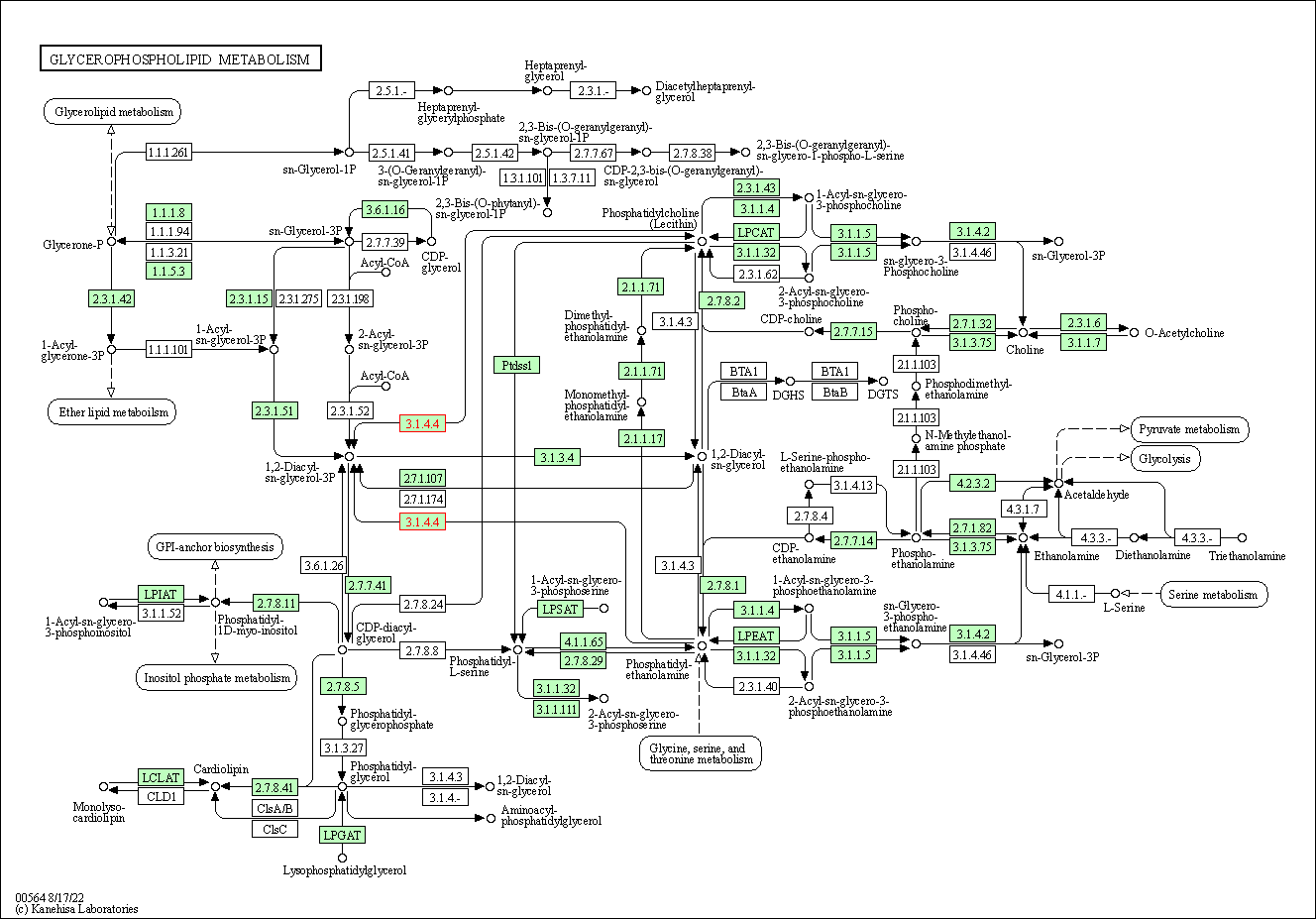
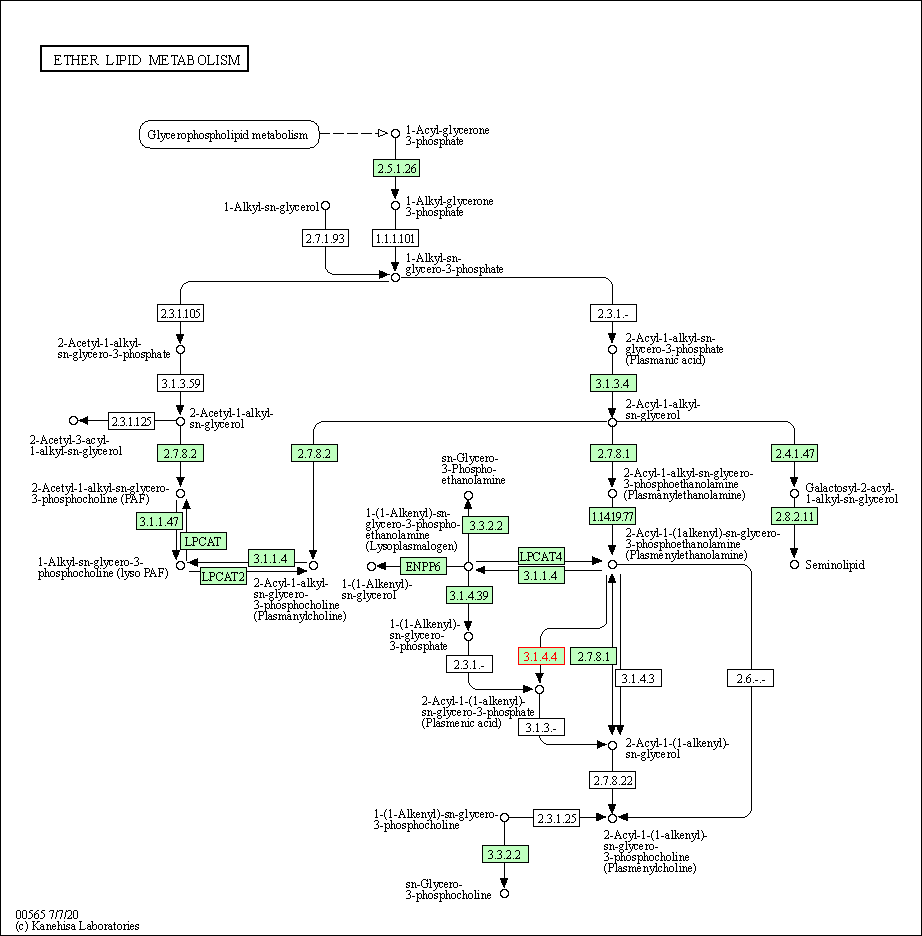
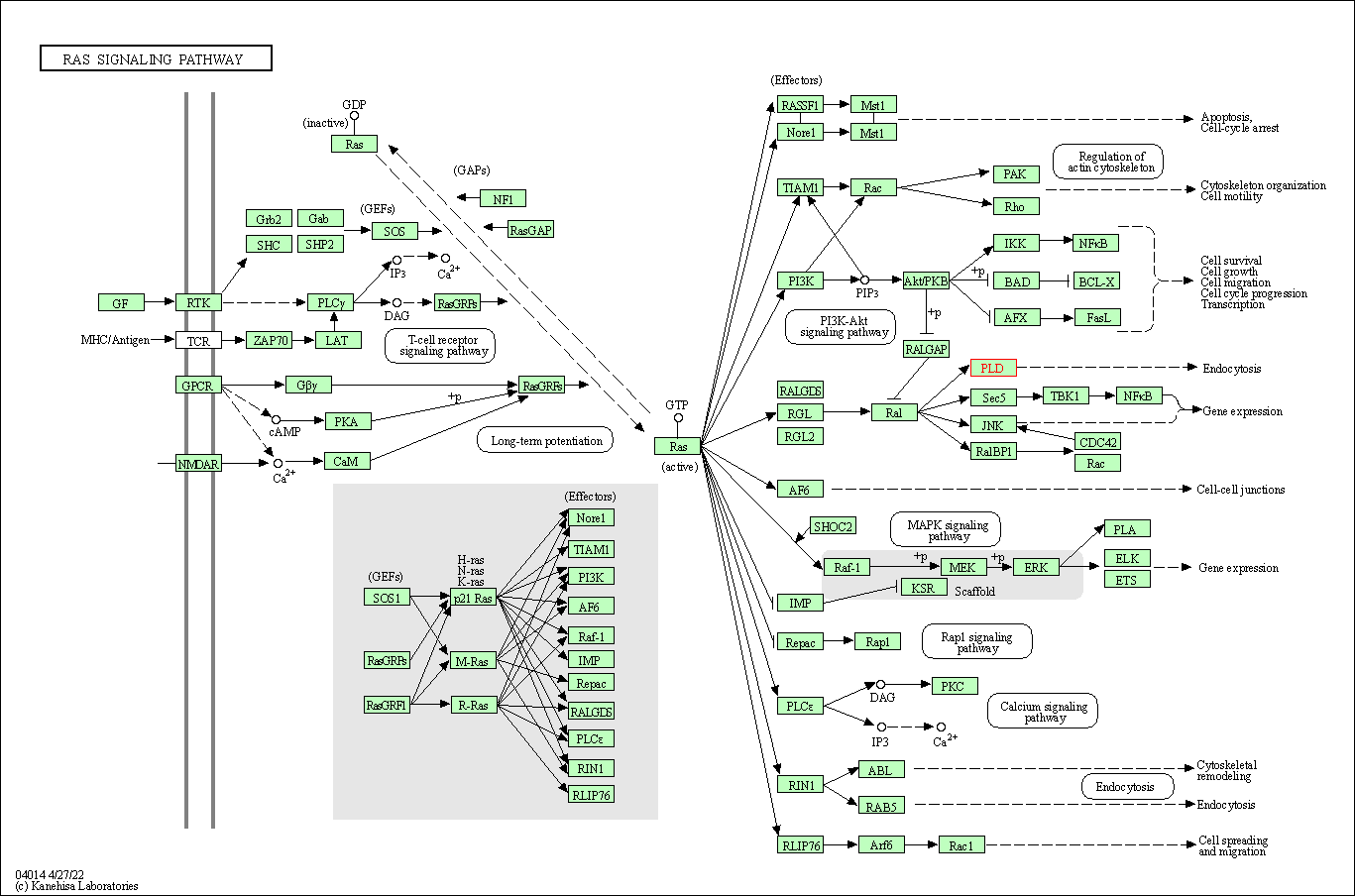

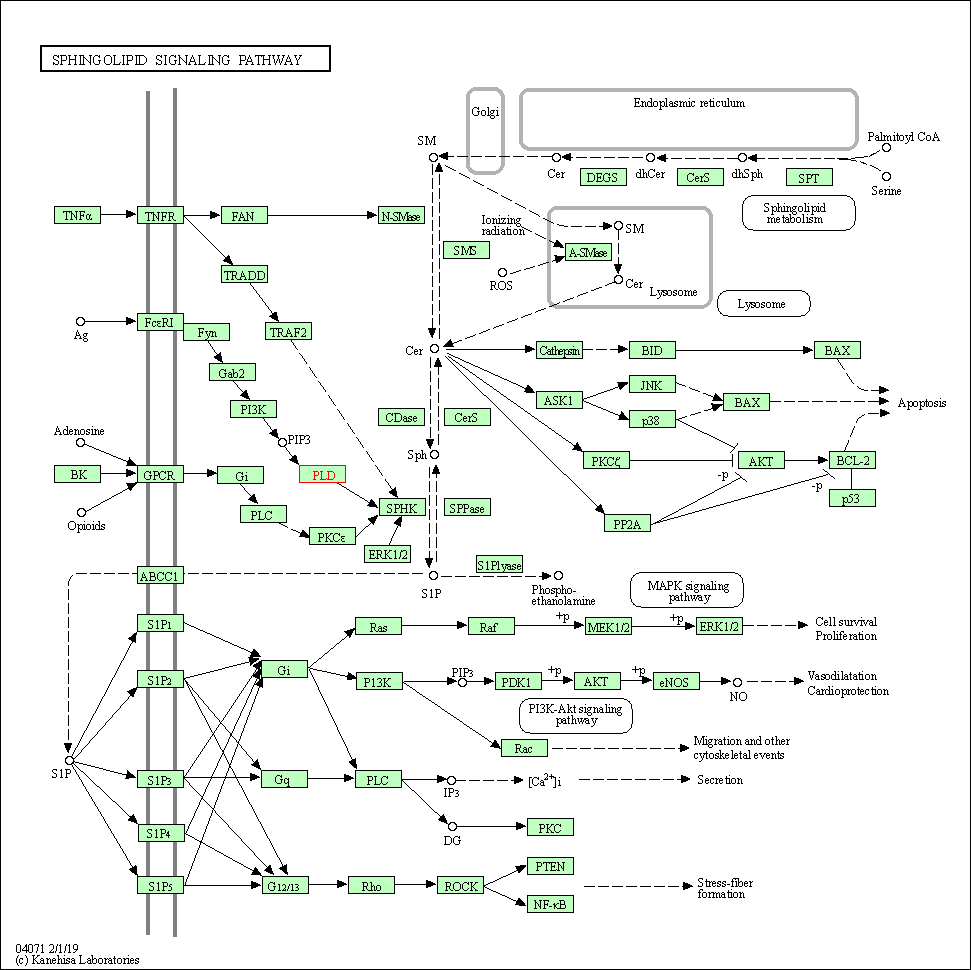
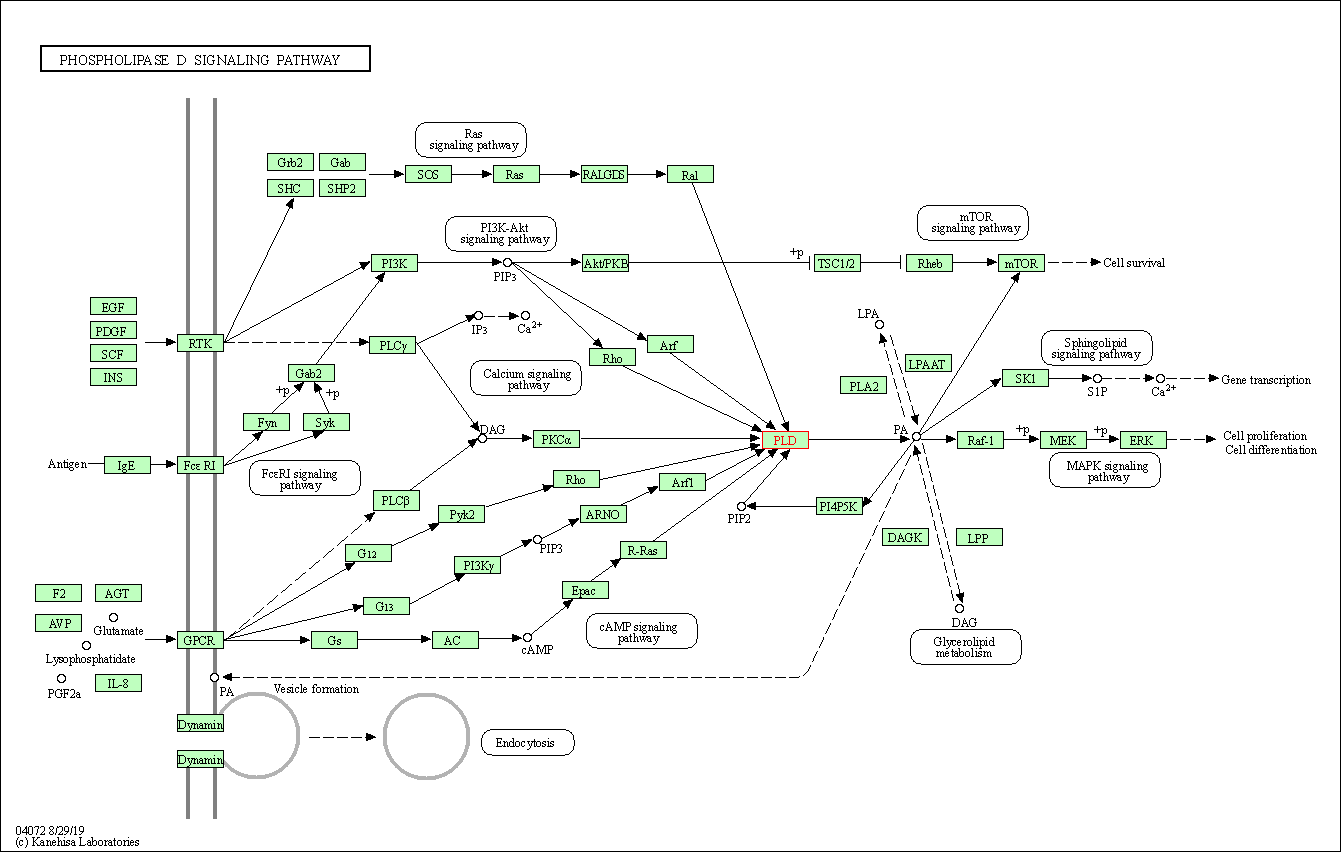

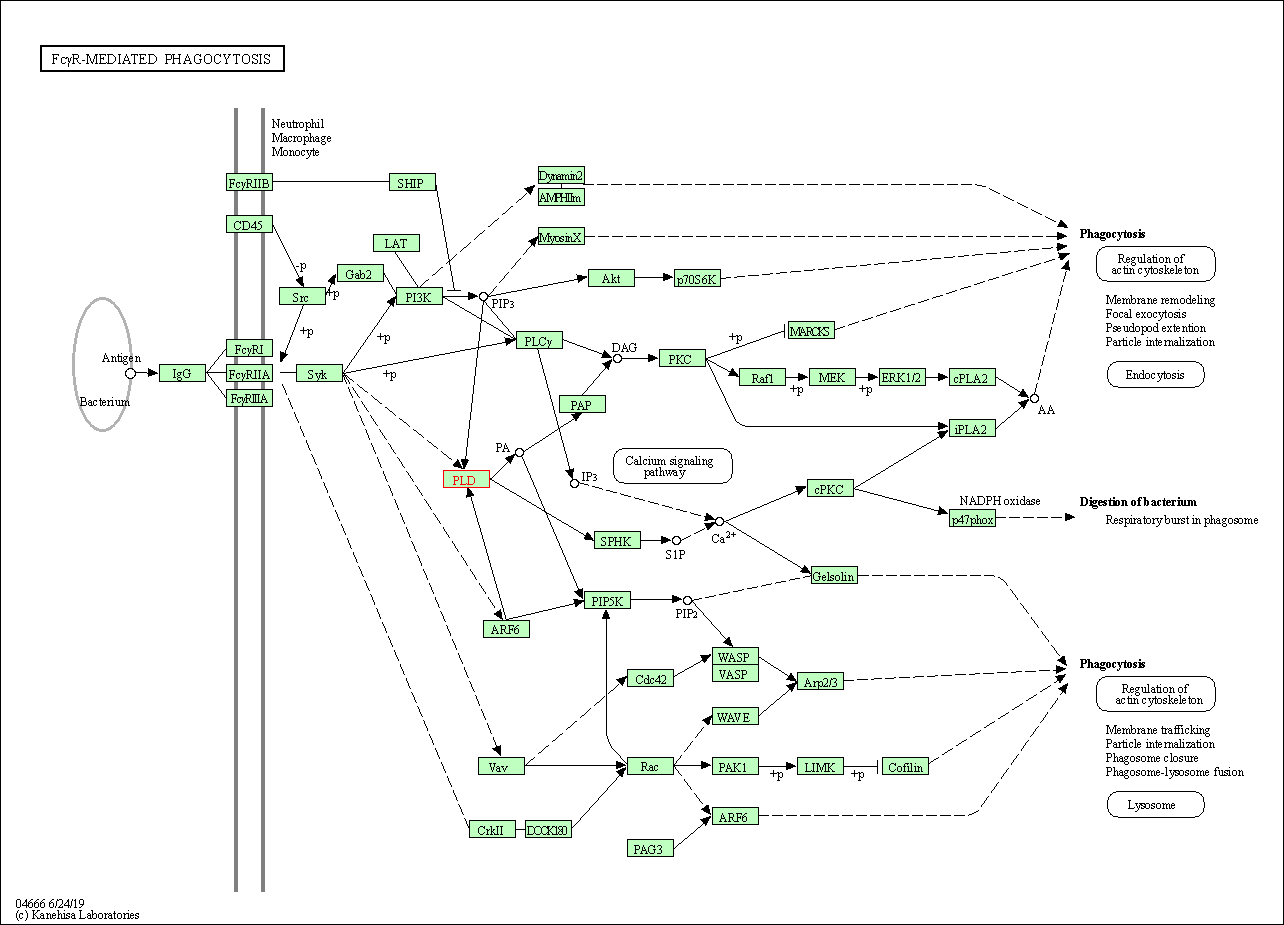


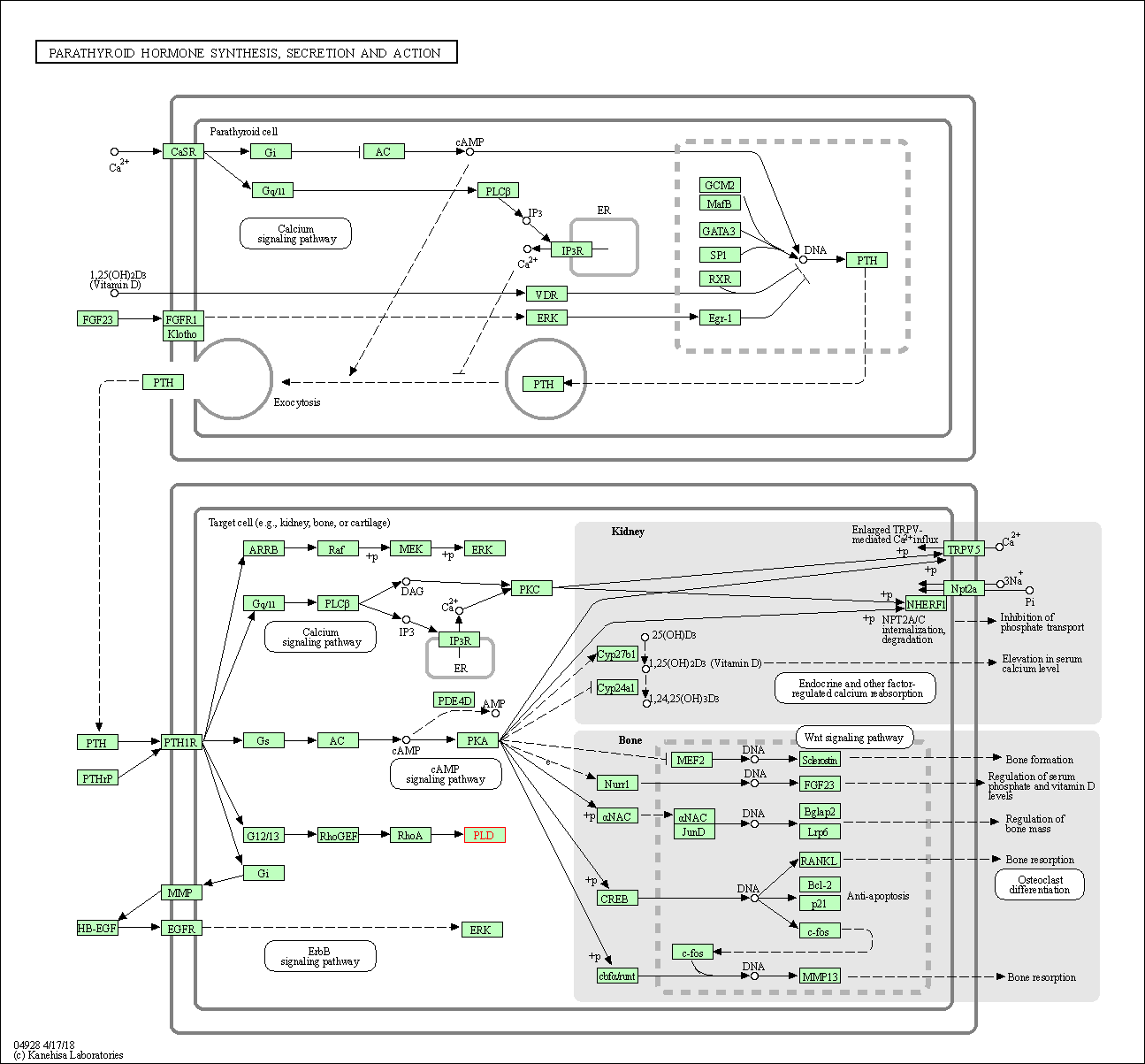
| KEGG Pathway | Pathway ID | Affiliated Target | Pathway Map |
|---|---|---|---|
| Glycerophospholipid metabolism | hsa00564 | Affiliated Target |

|
| Class: Metabolism => Lipid metabolism | Pathway Hierarchy | ||
| Ether lipid metabolism | hsa00565 | Affiliated Target |

|
| Class: Metabolism => Lipid metabolism | Pathway Hierarchy | ||
| Ras signaling pathway | hsa04014 | Affiliated Target |

|
| Class: Environmental Information Processing => Signal transduction | Pathway Hierarchy | ||
| cAMP signaling pathway | hsa04024 | Affiliated Target |

|
| Class: Environmental Information Processing => Signal transduction | Pathway Hierarchy | ||
| Sphingolipid signaling pathway | hsa04071 | Affiliated Target |

|
| Class: Environmental Information Processing => Signal transduction | Pathway Hierarchy | ||
| Phospholipase D signaling pathway | hsa04072 | Affiliated Target |

|
| Class: Environmental Information Processing => Signal transduction | Pathway Hierarchy | ||
| Endocytosis | hsa04144 | Affiliated Target |

|
| Class: Cellular Processes => Transport and catabolism | Pathway Hierarchy | ||
| Fc gamma R-mediated phagocytosis | hsa04666 | Affiliated Target |

|
| Class: Organismal Systems => Immune system | Pathway Hierarchy | ||
| Glutamatergic synapse | hsa04724 | Affiliated Target |

|
| Class: Organismal Systems => Nervous system | Pathway Hierarchy | ||
| GnRH signaling pathway | hsa04912 | Affiliated Target |

|
| Class: Organismal Systems => Endocrine system | Pathway Hierarchy | ||
| Parathyroid hormone synthesis, secretion and action | hsa04928 | Affiliated Target |

|
| Class: Organismal Systems => Endocrine system | Pathway Hierarchy | ||
| Click to Show/Hide the Information of Affiliated Human Pathways | |||
| Degree | 9 | Degree centrality | 9.67E-04 | Betweenness centrality | 4.17E-03 |
|---|---|---|---|---|---|
| Closeness centrality | 2.25E-01 | Radiality | 1.40E+01 | Clustering coefficient | 1.39E-01 |
| Neighborhood connectivity | 5.31E+01 | Topological coefficient | 1.58E-01 | Eccentricity | 12 |
| Download | Click to Download the Full PPI Network of This Target | ||||
| Chemical Structure based Activity Landscape of Target | Top |
|---|---|
| Drug Property Profile of Target | Top | |
|---|---|---|
| (1) Molecular Weight (mw) based Drug Clustering | (2) Octanol/Water Partition Coefficient (xlogp) based Drug Clustering | |
|
|
||
| (3) Hydrogen Bond Donor Count (hbonddonor) based Drug Clustering | (4) Hydrogen Bond Acceptor Count (hbondacc) based Drug Clustering | |
|
|
||
| (5) Rotatable Bond Count (rotbonds) based Drug Clustering | (6) Topological Polar Surface Area (polararea) based Drug Clustering | |
|
|
||
| "RO5" indicates the cutoff set by lipinski's rule of five; "D123AB" colored in GREEN denotes the no violation of any cutoff in lipinski's rule of five; "D123AB" colored in PURPLE refers to the violation of only one cutoff in lipinski's rule of five; "D123AB" colored in BLACK represents the violation of more than one cutoffs in lipinski's rule of five | ||
| Target Regulators | Top | |||||
|---|---|---|---|---|---|---|
| Target-regulating microRNAs | ||||||
| Target-interacting Proteins | ||||||
| Target Profiles in Patients | Top | |||||
|---|---|---|---|---|---|---|
| Target Expression Profile (TEP) |
||||||
| Target Affiliated Biological Pathways | Top | |||||
|---|---|---|---|---|---|---|
| BioCyc | [+] 1 BioCyc Pathways | + | ||||
| 1 | Phospholipases | |||||
| KEGG Pathway | [+] 13 KEGG Pathways | + | ||||
| 1 | Glycerophospholipid metabolism | |||||
| 2 | Ether lipid metabolism | |||||
| 3 | Metabolic pathways | |||||
| 4 | Ras signaling pathway | |||||
| 5 | cAMP signaling pathway | |||||
| 6 | Sphingolipid signaling pathway | |||||
| 7 | Endocytosis | |||||
| 8 | Fc gamma R-mediated phagocytosis | |||||
| 9 | Glutamatergic synapse | |||||
| 10 | GnRH signaling pathway | |||||
| 11 | Pathways in cancer | |||||
| 12 | Pancreatic cancer | |||||
| 13 | Choline metabolism in cancer | |||||
| Panther Pathway | [+] 2 Panther Pathways | + | ||||
| 1 | Angiogenesis | |||||
| 2 | Ras Pathway | |||||
| PID Pathway | [+] 8 PID Pathways | + | ||||
| 1 | RhoA signaling pathway | |||||
| 2 | Arf6 trafficking events | |||||
| 3 | CDC42 signaling events | |||||
| 4 | Arf6 downstream pathway | |||||
| 5 | mTOR signaling pathway | |||||
| 6 | ErbB1 downstream signaling | |||||
| 7 | IL8- and CXCR1-mediated signaling events | |||||
| 8 | Alpha-synuclein signaling | |||||
| Reactome | [+] 1 Reactome Pathways | + | ||||
| 1 | Role of phospholipids in phagocytosis | |||||
| WikiPathways | [+] 2 WikiPathways | + | ||||
| 1 | EGF/EGFR Signaling Pathway | |||||
| 2 | TSH signaling pathway | |||||
| Target-Related Models and Studies | Top | |||||
|---|---|---|---|---|---|---|
| Target Validation | ||||||
| References | Top | |||||
|---|---|---|---|---|---|---|
| REF 1 | Design and synthesis of isoform-selective phospholipase D (PLD) inhibitors. Part II. Identification of the 1,3,8-triazaspiro[4,5]decan-4-one privil... Bioorg Med Chem Lett. 2009 Apr 15;19(8):2240-3. | |||||
| REF 2 | Antiviral therapies with phospholipase D inhibitors. US9453017. | |||||
| REF 3 | Isoform selective phospholipase D inhibitors. US9127005. | |||||
| REF 4 | Design of isoform-selective phospholipase D inhibitors that modulate cancer cell invasiveness. Nat Chem Biol. 2009 Feb;5(2):108-17. | |||||
If You Find Any Error in Data or Bug in Web Service, Please Kindly Report It to Dr. Zhou and Dr. Zhang.

